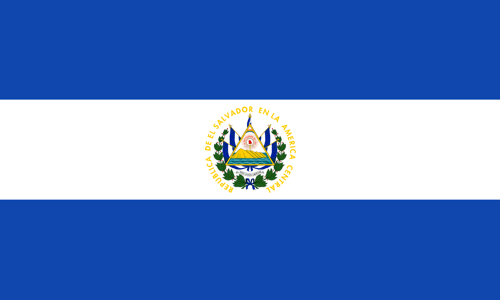FAMILY-BASED VISAS
Introduction to Family-based petitions and immigrant visas
At the Law Offices of John F. Waldron, an immigration attorney in San Antonio Texas:
- We work hard at reuniting families separating by borders or gaining legal status so that they may stay together.
- We explore every possible path permitted by law to arrive at a creative solution for even the most difficult cases.
We bring families together by:
- Filing fiancé petitions and visas;
- Filing petitions and applications for adjustment to permanent residency from within the U.S.A.;
- Filing petitions and applications through consular processing;
- Filing hardship waivers for those who have overstayed their visa;
- Filing hardship waivers for those who came to the United States without documents.
People often call us because they are not sure for whom they can petition. If you are a U.S. citizen, you may petition for:
- Your husband or wife;
- Unmarried children under the age of 21;
- Married sons or daughters;
- Brothers and sisters (as long as you are 21 years old);
- Mother or father (as long as you are 21 years old);
If you are a lawful permanent resident, you only may file for:
- Your husband or wife;
- Unmarried children under age 21;
- Unmarried sons or daughters over age 21.
For U.S. citizens: Petitions filed for the spouse or minor children will become immediately available. However, petitions for married sons and daughters, and for brothers and sisters will fall into a preference category, which involves waiting until a visa number becomes available.
For permanent residence: All petitions filed will fall into a preference category and will involve waiting until a visa number becomes available.
What is the Preference System?
There are two groups of family-based visa petitions:
- Those filed for Immediate relatives;
- All others fall into a Preference system.
Who are the Immediate Relatives?
- Husband or Wife of a U.S. Citizen;
- Unmarried Child of a U.S. Citizen;
- Parent of a U.S. Citizen Son or Daughter who is 21 years of age when filing.
- All others fall into a preference category and must wait until a visa number becomes available. There are only a certain number of visas available for each category each year, and for this reason, there is a waiting line.
What are the preference categories for relatives of U.S. Citizens and Lawful Permanent Residents?
- F1 Preference: Unmarried Sons or Daughters of U.S. Citizens fall into the F1 preference category. There are 23,400 Visas are available for the F1 preference category each year.
- F2 Preference: Husbands and wives, children under 21 years of age, and unmarried sons or daughters over age 21 of Lawful Permanent Residents fall into the F2 preference category. There are 114,200 available each year. Of those, 27 percent go to spouses and minor children.
- F3 Preference: Married sons and daughters of U.S. citizens, and their spouses and their minor children make up the F3 preference category. There are 23,400 Visa available for the F3 category each year.
- F4 Preference: Brothers and sisters of U.S. Citizens and their spouses and their minor children make up the F4 preference category. The U.S. Citizen must be at least 21 years of age when filing. There are 65,000 visa numbers available each year.
Once the Petition is filed you need to check the Visa Bulletin to see when a visa number will become available for your family member’s category.
The visa preference system is complicated. There are a number of countries that have their own waiting lists because they are “oversubscribed,” meaning there are so many people applying from these countries, their waiting list is longer than that of other countries. Countries with their own waiting list include Mexico, China, India and the Philippines.
Options for sponsoring a spouse if you are a U.S. Citizen:
If you are a U.S. citizen
and you have someone special that you have been “dating” long distance through Skype and telephone, and the two of you have decided to make that commitment to spend the rest of your lives together, you can bring your loved one to the United States in one of three ways.
The first is by filing a fiance Petition and when that is approved, filing for a visa with the U.S. consulate in your loved one’s home country. Once your fiance comes to the United States, you must marry within 90 days. Then you can file the Petition and Application for the permanent visa together at the same time.
If you are not quite sure about the commitment or whether your fiance will like living in the United States, your fiance can come to see you for a visit. If your fiance likes it here and the two of you have decided to make that commitment, you can marry and file the Petition and Application for the permanent visa. This option requires caution and it is best to consult with an attorney.
The last way to go is for you, the U.S. citizen to go overseas and marry your fiance in your fiance's home country. When you return to the United States, you can file the Petition for permanent residency and when that is approved, bring your spouse over through consular processing.
The choice that you make as a U.S. citizen very much depends on your situation and its best to discuss this with an attorney who knows how to apply the facts in your situation to provide you with the best option under the law.
Options for petitioning for a spouse if you are a lawful permanent resident:
If you are a permanent resident and you want to sponsor your spouse so that your spouse can obtain a green card, the situation is slightly different.
If your husband or wife came to the United States legally on a tourist visa or a border crossing card, and they have stayed longer than the time that their visa stamp (also known as the “duration of stay”) permitted, you can file a Petition for a green card for them, but they will not be able to adjust by filing an adjustment of status application within the United States. They will need to go back to their home country and file for the permanent residency card (also known as a green card or immigrant visa) through consular processing.
If they have overstayed their visa and remained in the United States more than one year, they will be subjected to a bar. The way to get around the bar is by filing an application for a waiver. A waiver for unlawful presence is asking the immigration authorities for a pardon, and requires proving extreme hardship to you, the lawful resident. It is a difficult standard to meet.
If your spouse entered the United States without documents, you can also petition for them. However, your spouse will need to go through consular processing after obtaining a hardship waiver.
If your spouse has not overstayed and goes back to the home country or is still overseas, you, as a permanent resident can file the Petition for their green card and when that is approved, file for the immigrant visa through consular processing.
Our immigration attorneys will listen to the facts in your situation and make a recommendation that seems to be the best fit for your circumstances.
Conditional residence and removal of conditions:
Warning
- If you have been married less than two years:
Your spouse will get a conditional residence card and the two of you will need to file another Petition to remove the condition within two years of receiving the conditional green card.
How to prepare for removing conditions:
- We prepare very strong, well-documented applications that show that the marriage was entered into in good faith. This prevents later problems.
- We present evidence of co-mingling of finances and assets.
- You will want to continue adding to the evidence of co-mingled finances and assets throughout your marriage leading up to the time of filing to remove the condition.
- The immigration authorities view marriage as a “partnership” in which spouses share income and debts. Evidence of this kind of sharing includes joint bank accounts and filing taxes jointly.
- You will need this kind of evidence when filing to remove the condition.
- The Petition to remove the condition generally is filed jointly by the husband and wife.
What happens if the two of you are no longer getting along?
- This requirement of removing the conditions in a new marriage puts a lot of stress on a relationship. It creates a power imbalance. Often new marriages result in separation or divorce because of the pressure the immigration process imposes.
- If this happens to you, the conditional immigrant, consult with an attorney and do not file a petition to remove the condition without on your own because it gets complicated and you want a strong advocate on your side.
- You will need to proceed under the exception to the joint filing requirement.
- Filing under the exception to joint filing requirement will necessitate providing evidence that your marriage was entered into in good faith.
It is important that you file the petition to remove the condition on time, whether or not you are still married.
- If you do not file on time or if USCIS denies your petition, you may be put in removal proceedings and will have to fight your case in front of an Immigration Judge. We know how to present your facts in the best positive light. We will also attend the USCIS interview with you if requested.
Filing for Children:
If you are a U.S. Citizen or Lawful Permanent Resident, we can also help you file for your children.
- Note: If you are a U.S. citizen, you can file for your sons and daughters of any age, even if they are married. However, if they are over 21 years of age they will fall into a preference category and the preference is determined by whether they are married or not.
- BUT if you are a Lawful Permanent Resident, there is no visa category for married sons or daughters.
Immigration law generally favors the mother. If you are a father and you want to petition for your child, and that was born out of wedlock, you must submit evidence that shows:
- That you and the child’s mother were married before your child reached age 18, or
- That the child was legitimized (acknowledging you as the father) under the laws of the country where the child lives before the child reached age 18, or You must show that a parent-child relationship existed between you and the child, which may include evidence that the child lived with you and that you supported the child financially, and that you took an active interest in the child’s well-being.
If you are faced with any of these situations, consult with an attorney.
Unlawful presence:
What if your loved one overstayed their visa or came into the United States without documents (also known as “entry without inspection,” or EWI)?
- If you are a U.S. Citizen, you can file for your family member who came in legally and overstayed the visa without a problem;
- BUT if your family member came EWI, without documents, whether you are a U.S. Citizen or a lawful permanent resident, you will need to file a waiver for the unlawful presence of your loved one.
- The waiver is basically a pardon for being in the United States without legal permission.
In order to prevail on the waiver, your loved one must show the immigration authorities that you, the U.S. Citizen or lawful permanent resident spouse would suffer an EXTREME hardship without your loved with you.
- The extreme hardship waiver for unlawful presence is difficult to meet.
- Unlike the waiver for cancellation of removal, which is filed with the immigration judge if one is in removal proceedings, and in which one can show extreme hardship to spouse, parent or children, the waiver for unlawful presence only allows showing hardship to spouse or parent.
- Children do not count when filing a waiver for unlawful presence.
Types of hardship include:
- Impact on Health of qualifying family member;
- Financial considerations;
- Loss of education opportunities;
- Family ties to the United States and length of stay;
- Special factors such as difficulty for relocation or any risk of harm due to unstable country conditions.
We work hard at filing well-documented hardship waivers that include evidence of how the qualifying family member will suffer if the loved one is not allowed to stay.
Consular Processing:
Consular processing is used when:
- A U.S. citizen has a spouse oversees that he or she want to bring to the United States;
- A U.S. citizen or lawful permanent resident has a spouse that came in without documents, and has an approved waiver for unlawful presence.
People who entered legally with a tourist visa can file for adjustment of status in the United States.
- EXCEPTION – if you are not a U.S. citizen but a lawful permanent resident, your spouse cannot file for adjustment of status if he or she overstayed their visa. Overstay is determined by the duration of stay stamp and not by the date of the visa itself. If you are not sure, consult with an attorney.
- If the exception applies, your spouse will need to file for a waiver of unlawful presence and proceed through consular processing.
With consular processing, the Petition is first filed with USCIS, which is part of the Department of Homeland Security, and when it is approved, an application for the immigrant visa is filed with the U.S. Department of State through the National Visa Center.
It is important to have an immigration attorney assisting if you are filing through consular processing. The process is complicated and if the application is denied by the consular officer, there is no appeal.
At the Law Offices of John F. Waldron, we have experience in filing for immigrant visas at many different U.S. consular posts. We will prepare the immigrant visa application and when the appointment time for the interview arrives, we will advise your loved ones what to expect and how to proceed.








